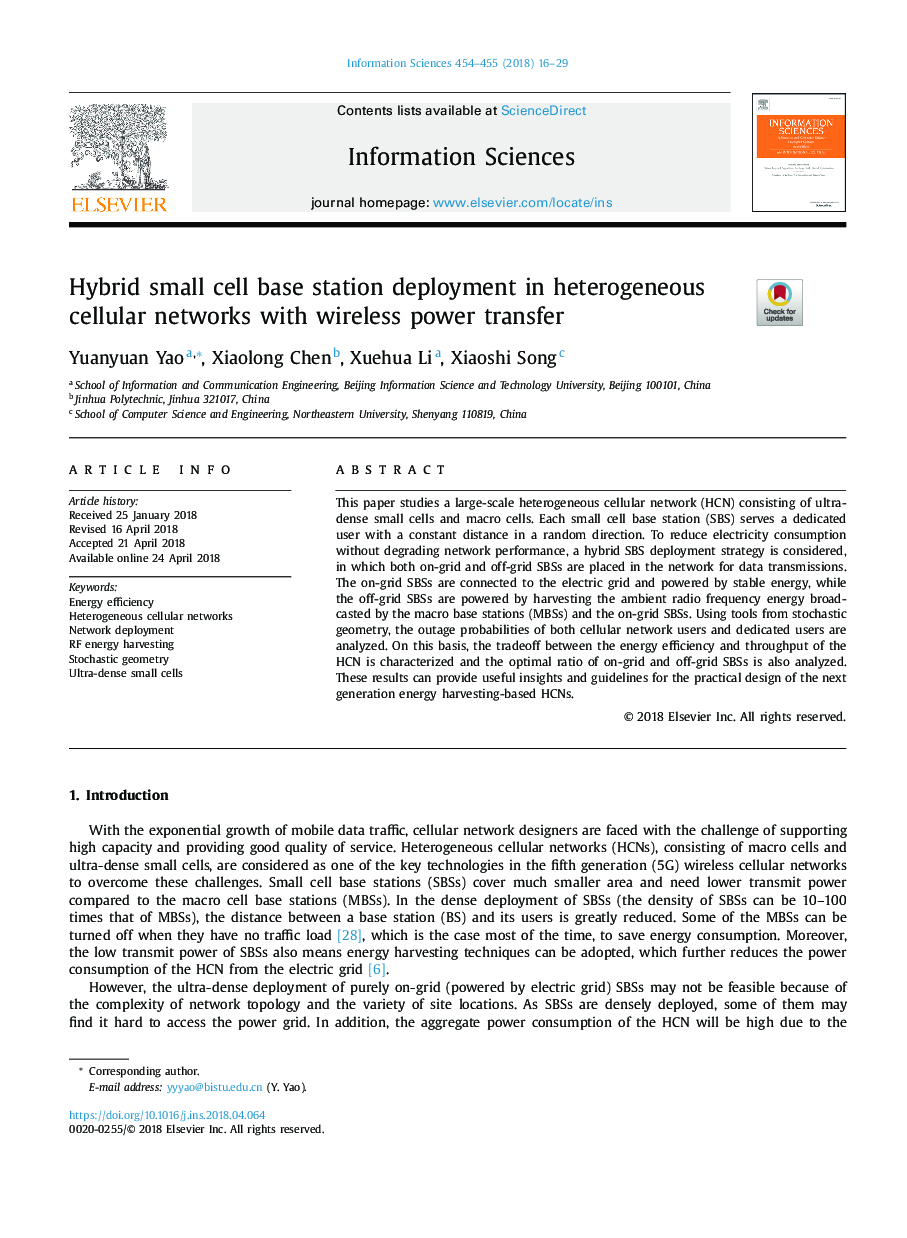| Article ID | Journal | Published Year | Pages | File Type |
|---|---|---|---|---|
| 6856367 | Information Sciences | 2018 | 14 Pages |
Abstract
This paper studies a large-scale heterogeneous cellular network (HCN) consisting of ultra-dense small cells and macro cells. Each small cell base station (SBS) serves a dedicated user with a constant distance in a random direction. To reduce electricity consumption without degrading network performance, a hybrid SBS deployment strategy is considered, in which both on-grid and off-grid SBSs are placed in the network for data transmissions. The on-grid SBSs are connected to the electric grid and powered by stable energy, while the off-grid SBSs are powered by harvesting the ambient radio frequency energy broadcasted by the macro base stations (MBSs) and the on-grid SBSs. Using tools from stochastic geometry, the outage probabilities of both cellular network users and dedicated users are analyzed. On this basis, the tradeoff between the energy efficiency and throughput of the HCN is characterized and the optimal ratio of on-grid and off-grid SBSs is also analyzed. These results can provide useful insights and guidelines for the practical design of the next generation energy harvesting-based HCNs.
Keywords
Related Topics
Physical Sciences and Engineering
Computer Science
Artificial Intelligence
Authors
Yuanyuan Yao, Xiaolong Chen, Xuehua Li, Xiaoshi Song,
